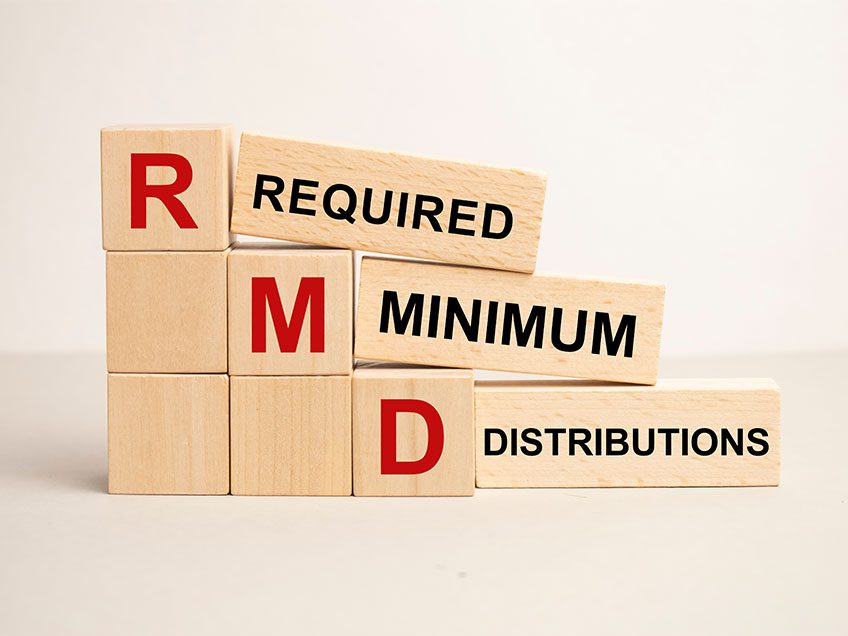
When planning for retirement, many people turn to non-qualified annuities as a way to ensure financial security. Non-qualified annuities are popular because they offer tax-deferred growth and can provide a steady income stream in retirement. However, understanding how taxation on non-qualified annuities works is crucial before investing, as it can significantly impact your overall financial strategy.
In this guide, we’ll break down what non-qualified annuities are, how they differ from qualified annuities, and how the tax rules apply when you start taking withdrawals. We’ll also discuss key factors to consider when investing in non-qualified annuities and provide a detailed look at the tax implications.
What Are Non-Qualified Annuities?
A non-qualified annuity is an insurance product that allows you to invest money that has already been taxed (after-tax dollars). The funds you contribute grow tax-deferred, meaning you won’t pay taxes on any earnings until you begin withdrawing the money. Unlike qualified annuities (such as those funded through a 401(k) or IRA), non-qualified annuities don’t come with contribution limits set by the IRS, making them a flexible option for those who want to invest more than the annual limits on tax-advantaged retirement accounts.
How Are Non-Qualified Annuities Taxed?
One of the main advantages of non-qualified annuities is the ability to let your money grow tax-deferred over time. This means you won’t pay taxes on any interest, dividends, or capital gains as they accumulate inside the annuity. However, it’s important to understand the specific tax rules on withdrawals and how they apply to non-qualified annuities. Read More

What to Do If You Lose Your Job Before Retirement: Conservative Strategies with a Focus on Income
Losing your job before reaching retirement age, particularly before age 62 when Social Security benefits become available, can be a challenging situation. However, this setback also provides an opportunity to reassess your retirement strategy and focus on generating reliable income streams rather than solely depending on accumulated assets. Here’s a comprehensive guide on managing this transition effectively, emphasizing a conservative approach that ensures income stability.
1. Reassess Your Financial Priorities: Income Over Assets
When faced with a job loss close to retirement, it’s crucial to shift your focus from merely preserving assets to generating steady income. Here’s why:
- Predictable Cash Flow: Income provides a regular stream of funds to cover essential expenses, reducing the need to deplete your savings prematurely.
- Protection Against Market Volatility: Focusing on income shields you from market downturns that could erode your savings.
- Longevity Risk Management: Ensuring a steady income stream helps protect against the risk of outliving your assets, a significant concern for many approaching retirement.
2. Identify Alternative Income Sources
Read More

👤Authored by Terry Coleman, a financial expert with extensive experience in retirement planning and annuities. Discover more about my background and expertise here.
Retirement planning is like managing a farming operation—it requires careful consideration, strategy, and a good understanding of the market dynamics. Just as a farmer decides when to buy or sell cattle based on market conditions, investors must determine the best strategies to protect and grow their retirement savings. Annuities are a crucial tool in this regard, providing guaranteed income and mitigating risks like inflation, taxes, long-term care costs, and market volatility. But with various types of annuities available, deciding which is right for you can be overwhelming. This article will explore different types of annuities and why they might be the best fit for your retirement needs, focusing on guaranteed growth, zero market risk, life income, and legacy planning.
Understanding the Basics: What is an Annuity?
An annuity is a financial product that provides a steady stream of income, typically during retirement. It involves a contract with an insurance company where you pay a lump sum or series of payments in exchange for periodic payments that can last for a specific number of years or the rest of your life. The primary appeal of annuities is the promise of a guaranteed income, which can help you navigate financial uncertainties like inflation, taxes, and long-term care costs.
The Accumulation Phase: Setting the Stage for Retirement
Think of the accumulation phase as the period when a farmer invests in his herd, buying cows when prices are low and selling when they are high. During this phase, which usually spans most of your working years, you can afford to take some risks to grow your savings. However, as you approach retirement—typically three to five years out—it’s crucial to shift your focus from high-risk, high-reward investments to more moderate or conservative assets. This transition is akin to the farmer deciding to hold onto his herd and invest in their upkeep when beef prices drop.
This is where annuities come into play, particularly fixed annuities and indexed annuities. Fixed annuities offer a predictable, guaranteed return, shielding your investment from market volatility—a vital feature for those nearing retirement who can’t afford to lose their hard-earned savings. Indexed annuities, on the other hand, provide a balance between risk and reward by linking returns to a market index like the S&P 500. This allows for some growth potential while still offering zero market risk—your principal investment is protected even if the market takes a downturn. Read More

Planning for retirement is a significant financial decision, and the Safe Money Report is your essential resource for ensuring financial security during this critical phase of life. This report is designed to help you navigate the complexities of retirement with strategies that focus on low-risk investments, income planning, and wealth preservation. By following the principles outlined in this report, you can confidently approach retirement knowing that your financial future is secure.
Introduction to the Safe Money Report
The New Retirement Report introduces a new era of retirement planning, reflecting the challenges and opportunities facing today’s retirees. It highlights the growing number of individuals entering retirement and the unique hurdles they face, such as increased longevity, economic uncertainty, and the need for more innovative financial solutions. Understanding these factors is crucial as they directly impact how you should plan and allocate your retirement assets.
The New Retirement Landscape
Read More

When it comes to planning for retirement, understanding how your savings stack up against the average retirement savings by age is crucial. Many people delay making important financial decisions, not realizing the significant impact that waiting can have on their retirement security. This article explores how your timing, in comparison to the average retirement savings by age, can affect your ability to achieve a stable and guaranteed income in retirement.
Understanding Average Retirement Savings by Age
Knowing the average retirement savings by age can help you assess whether you’re on track for retirement. For example, if you’re 40 years old and your retirement savings are close to the average for your age group, you might feel reassured. However, even if your savings are average, the timing of when you secure your retirement income can have a profound impact on your future financial security.
The Cost of Waiting: A Closer Look
Consider two hypothetical 40-year-old individuals, Savvy Sue and Cautious Bob. Both want to retire at 60 and aim to generate an additional $25,000 in annual lifetime income. Despite both having average retirement savings for their age, their approaches to securing this income differ. Sue decides to lock in her retirement income at age 40, while Bob delays his decision until age 50. Read More

This question leads many to search for a “retirement savings magic number“—a specific dollar amount that supposedly guarantees financial security throughout their golden years.
The Allure of the Magic Number
The concept of a retirement savings magic number suggests there is a one-size-fits-all figure applicable to everyone.
Key Factors Influencing Retirement Income Needs
Several factors influence how much money you will need in retirement, making it difficult to identify a single magic number that works for everyone:
- Lifestyle Choices: Your desired retirement lifestyle significantly affects your income needs. Will you be traveling the world, pursuing expensive hobbies, or downsizing to a more frugal lifestyle? Each scenario comes with different financial requirements. For instance, frequent international travel can be quite expensive, while a more sedentary lifestyle at home might require less financial outlay.
- Healthcare Expenses: As you age, healthcare costs typically rise. Unexpected medical expenses, long-term care, and insurance premiums can significantly impact your retirement savings. Planning for these contingencies is essential. According to the Fidelity Retiree Health Care Cost Estimate, an average retired couple age 65 in 2021 may need approximately $300,000 saved (after tax) to cover health care expenses in retirement.
- Longevity: With increasing life expectancies, it’s prudent to plan for a longer retirement. The longer you live, the more resources you’ll need to maintain your standard of living. For example, if you retire at 65 and live to 95, you’ll need enough savings to last 30 years.
- Inflation: Over time, the cost of living increases. Inflation erodes the purchasing power of your savings, so your retirement plan must account for this to ensure your money lasts. Historical data shows that the average inflation rate is about 3% per year, but it can vary.
- Income Sources: Consider all potential income sources, including Social Security benefits, pensions, dividends, and part-time work. These can supplement your savings and reduce the amount you need to withdraw annually. Diversifying your income sources can provide a safety net if one source underperforms.
Read More

As retirement approaches, managing income streams and optimizing savings becomes crucial for ensuring financial stability and comfort in the golden years. In 2024, the introduction of process-based experiences for managing retirement income, which involves the strategic coordination of income sources, investment withdrawals, and tax management, is becoming increasingly common. Here’s a detailed look at these innovative approaches and tools that are shaping retirement planning today.
Strategic Coordination of Income Sources
One of the key aspects of process-based retirement income management is the strategic coordination of various income sources. This includes understanding the timing and interaction between Social Security benefits, pensions, annuities, and personal savings. By carefully planning when and how to tap into these sources, retirees can maximize their income while minimizing tax liabilities. Read More

New IRS and Treasury Department Regulations on Required Minimum Distributions: Key Takeaways and Implications
Today, the IRS and Treasury Department unveiled long-anticipated final regulations on Required Minimum Distributions (RMDs). These RMDs are mandatory yearly withdrawals from individual retirement accounts (IRAs), 401(k)s, and other tax-deferred retirement plans. The new regulations clarify changes from the SECURE Act of 2020 and the SECURE 2.0 Act of 2022 and will take effect on January 1, 2025.
Read More

The concept of a “magic number” for retirement income has always been a hot topic among financial professionals and their clients. Recent studies highlight the changing landscape and increased expectations for retirement savings. This article delves into the intricacies of determining a retirement savings goal and provides strategies to help you achieve financial security in your retirement.
One Magic Number Does Not Fit All
The idea of a single “magic number” for everyone is misleading. The Northwestern Mutual 2024 Planning & Progress Study found that the average American now believes they need $1.46 million to retire comfortably, a 15% increase from last year and a 53% jump since 2020. However, this figure varies widely depending on individual circumstances, lifestyle expectations, and other factors.
Personalized Retirement Goals
Your retirement income needs should be tailored to your lifestyle. Whether you plan to travel extensively, downsize, or support your children, your financial requirements will differ. An overly high income replacement ratio might lead to unnecessary tax burdens, while an underestimation could result in financial shortfalls. Read More

Common Financial Issues for Surviving Spouses: Navigating the Challenges
The loss of a spouse is a profoundly emotional experience, compounded by a myriad of financial and life issues that require immediate attention. In an era marked by economic uncertainty and rising living costs, surviving spouses face unique financial challenges. This article explores some common financial issues that surviving spouses may encounter and offers insights on how to manage them effectively.
One of the most significant financial changes for surviving spouses is the alteration in Social Security benefits. Couples typically receive two Social Security payments each month. However, after one spouse passes away, the survivor is left with either their own benefit or the survivor’s benefit, whichever is higher. This reduction in income can strain the surviving spouse’s budget, as many fixed expenses, such as mortgage or rent, utilities, and transportation costs, remain unchanged.
To mitigate the impact of this change, it’s crucial to have savings and other financial plans in place. Immediate actions include notifying the Social Security Administration of the death to ensure the timely adjustment of benefits. Surviving spouses should also consider whether the survivor’s benefit is larger than their own full benefit and plan accordingly. For those supporting minor children or disabled dependents, applying for survivor benefits promptly is essential since benefits are not retroactive to the date of death but start from the application date.
Drop in Overall Income
The death of a working spouse can lead to a significant drop in household income, potentially necessitating the surviving spouse to re-enter the workforce. This situation is particularly challenging for older adults who may have been out of the job market for years or have health issues. For example, if a corporate executive passes away, their spouse may struggle to find employment that matches the previous income level.
To prepare for this possibility, couples should consider building a robust emergency fund and exploring part-time work or freelance opportunities that align with the surviving spouse’s skills and health.
Read More


















